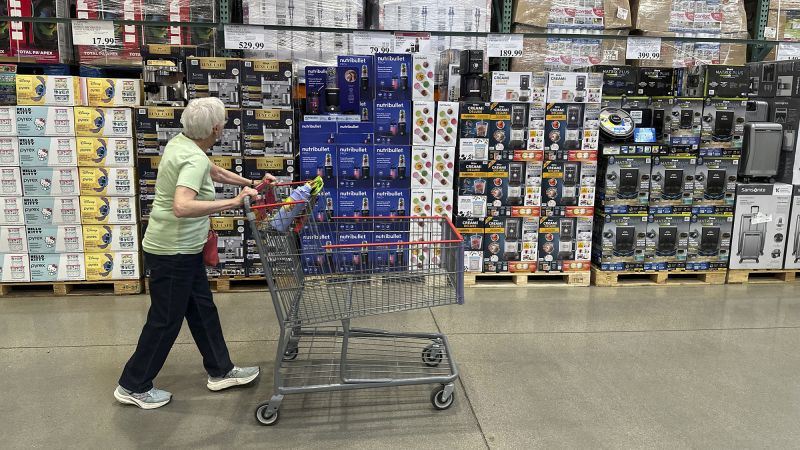The economic landscape in the United States has been significantly impacted by a combination of high inflation rates and increasing interest rates, making financial progress difficult for many Americans in recent years. This situation presents a dual challenge where the burden of rising costs, compounded by escalating interest charges, has stretched individual finances to their limits.
To exacerbate the dilemma, the previous administration under Donald Trump instituted a series of policy measures, including steep tariffs that have contributed to rising consumer prices. This has led to heightened uncertainty about economic stability, with consumer sentiment hitting some of the lowest levels recorded. The pessimistic outlook has been further augmented by the interplay between high prices and wavering consumer and business spending, which, when curtailed, could have cascading, detrimental effects on the labor market and the broader economy itself.
Despite the resilience shown by consumers who have traditionally been the engine of the U.S. economy, they are increasingly feeling the pinch. Many Americans are juggling higher debt loads, resulting in a noticeable uptick in defaults. Indicators of consumer distress are beginning to flash alarming signals, such as an increasing number of individuals opting to pay for their groceries in installments, a troubling sign of financial strain.
Of particular concern are student loan borrowers, who have been caught in a complex web of policy changes since the pandemic. As these borrowers faced uncertainties regarding repayment terms and potential debt forgiveness, many have found themselves falling behind on payments. The end of a temporary payment pause and the resumption of reporting missed payments to credit bureaus mean that those struggling to meet their obligations now risk negative impacts on their credit scores and even wage garnishments.
A closer look reveals that many household finances are fraying at the edges. The COVID-19 pandemic initially prompted some Americans to successfully reduce their debts and increase savings, thanks in part to stimulus checks, payment pauses on loans, and a surge in savings from curtailed discretionary spending. However, this trend has not proven sustainable amid the recent wave of inflation. As a result, credit card debt has surged, and many individuals are experiencing increasing difficulties in managing their bills.
The Federal Reserve’s measures to combat inflation through interest rate hikes are creating ripple effects. By late 2022, as debt repayment challenges mounted, consumer delinquency rates for auto loans and credit cards reached heights not seen in over a decade. The situation surrounding student loans is particularly bleak following the end of a several-year pause. Starting September 30, 2024, borrowers will need to navigate more stringent repayment conditions, with many already experiencing dramatic spikes in delinquency rates.
As these financial pressures mount, there has been a growing reliance on alternative payment methods, such as Buy Now, Pay Later (BNPL) loans. While at their best, these loans can offer consumers the flexibility needed to manage their finances, the ease of obtaining them has led many to overspend beyond their means. Alarmingly, a significant percentage of BNPL users are resorting to these loans to purchase groceries, which indicates a troubling shift in consumer behavior and financial health.
Recent analysis indicates that economic headwinds are intensifying for American households. Consumer sentiment has plummeted to near-historic lows, reverting to levels seen during periods of economic turmoil. The University of Michigan’s consumer sentiment index reflects that many Americans feel increasingly pessimistic about their current and future economic prospects, which is influenced heavily by issues such as trade wars and rising living costs. As this sentiment deteriorates, there is a growing concern about its potential to lead to reduced spending and business investment, risking a downturn and an increase in unemployment.
However, amidst this economic turbulence, there are glimmers of hope, as data from the Commerce Department suggests that income growth may be stabilizing and that savings rates have improved. This financial cushion could help households navigate the impending pressures from inflation and tariffs, suggesting that while economic challenges loom, a full-blown recession may be averted with prudent fiscal management and resilience. Consumers and policymakers must remain vigilant to maneuver through these uncertain times, ensuring that economic recovery does not falter under the weight of rising debt and consumer hardship.



